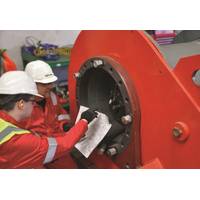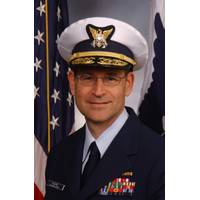BSEE: Report on Subsea Bolting Technology Released
In an effort to address a recurring problem with faulty connectors in critical safety equipment, the Bureau of Safety and Environmental Enforcement (BSEE) commissioned a National Academy of Engineering study on the matter in September 2016. After 18 months of study, the report entitled “High-Performance Bolting Technology for Offshore Oil and Natural Gas Operations” was published Friday. BSEE sponsored this study to leverage the resources of the National Materials and Manufacturing Board of the National Academies of Sciences, Engineering and Medicine with BSEE’s Emerging

Sparrows Wins BP Contract in Angola
of fixed and portable lifting equipment. The company will also be responsible for full project management, planning and coordination, technical support and training. Offshore personnel will also support helicopter operations, fire-fighting duties and maintenance of the on-board safety equipment.
Offshore Innovation in Motion
.” The WITT has potential in many onshore and offshore markets and will be open to discussions with companies seeking to license the technology. A smaller WITT in the near future will also be developed to provide 10 to 15 watts of power for autonomous vessels, buoys and marine safety equipment. While at present the company does not envisage a market on gliders or Remotely Operated Vehicles (ROVs), WITT Ltd. also want to provide autonomous power for sensors and telemetry solutions, as well as beacons for safety at sea. “There are many lifesaving and ocean survival application

US Well Control Regulations Proposed
the results of the investigations, including nearly 370 specific recommendations, and conducted extensive outreach to derive further enhancements from stakeholder input, academia, and industry best practices, standards and specifications. The blowout preventer, an essential piece of safety equipment used in offshore drilling operations, was a point of failure in the Deepwater Horizon event, but several other barriers failed as well. The cascade of multiple failures resulted in the loss of well control, an explosion, fire and subsequent months-long spill. In connection with this rulemaking
Petrobras Sets Well Depth Record
wells in the region are more than 2,700 meters deep, all drilled within a period of three years. This is a significant achievement given the adverse local drilling conditions, with intense ocean currents, deep water and the need to use more robust drilling equipment such as blowout preventers (safety equipment designed to permit well closure).
CIMC Makes Progress on Arctic Rig
, heave motion response amplitude of unit has been reduced; the unit motion performance has been obviously improved and greatly increased uptime of operation. It is Chinese initial design for ice class deep-water units, realizing operation in -25℃ harsh environment. All the external category I safety equipment, include escape walkway, ladder and lifeboat etc. are installated anti-icing or shelter. Above main deck all ESD1 is not off the open-air fan for explosion-proof type, Drilling large area installation wind wall. The owner, Mr. Stephen Adshead states “The North Dragon reflects nearly
VIKING Steps Up Pace of Innovation at SMM
This year’s SMM in Hamburg will see VIKING release more innovations than at any other point in its 50-year history, including new developments in PPE clothing, safety equipment outsourcing, onboard training solutions, and evacuation systems, as well as a catalogue that almost doubles the number of maritime products. Esbjerg, Denmark, September 2014 – Riding high on market successes, marine safety equipment manufacturer VIKING Life-Saving Equipment’s product developers have been adding innovation after innovation to the company’s already impressive range of products
VIKING Saatsea Puts Crew Training in its Place
the launch pad for the first onboard training system that enables them to design and build their own, fully customized courses for any training task. Leading the change, and present at VIKING’s stand in Hall B1, is VIKING Saatsea, the maritime software developer recently acquired by marine safety equipment manufacturer VIKING Life-Saving Equipment. VIKING Saatsea develops 24/7 onboard training systems for OPITO and STCW crew certification, addressing the need of vessel and rig owners and operators to continuously train their crews by offering a combined solution that manages planning, implementation

Disasters at Sea & Their Impact on Shipping Regulation
instruments concerning more specific issues are also in force worldwide. Dealing with the ship • SOLAS (International Convention for the Safety of Life at Sea, 1974) lays down a comprehensive range of minimum standards for the safe construction of ships and the basic safety equipment (e.g. fire protection, navigation, lifesaving and radio) to be carried on board. SOLAS also requires regular ship surveys and the issue by flag states of certificates of compliance. • MARPOL (International Convention for the Prevention of Pollution from Ships, 1973/1978)



 February 2024
February 2024





